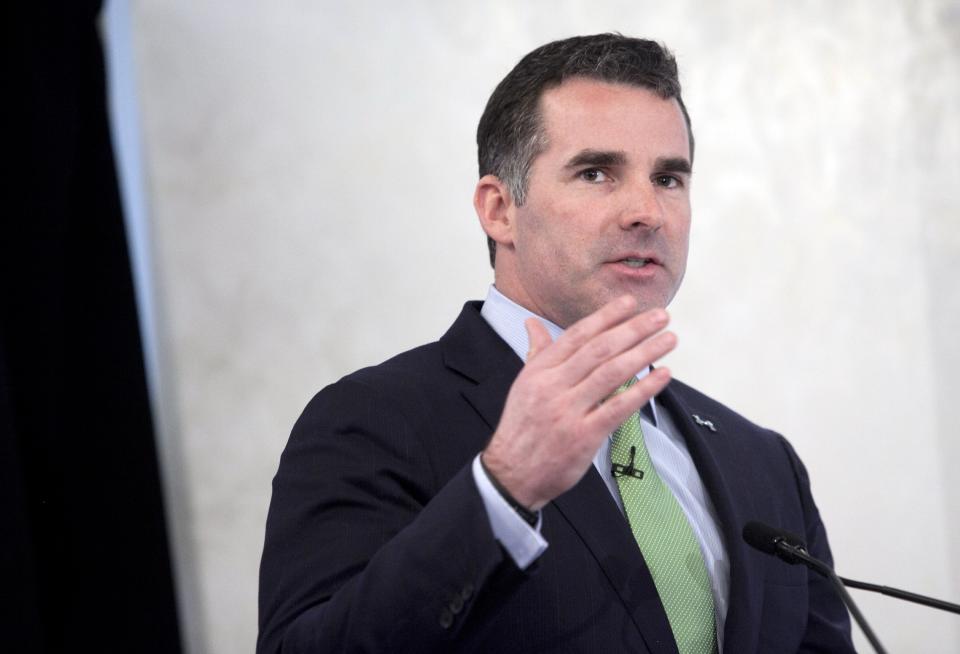Under Armour CEO: 'It's not about athleisure'

Under Armour (UA) reported its 26th consecutive quarter of more than 20% revenue growth on Tuesday.
The sports apparel company beat third-quarter earnings expectations, with earnings of 29 cents per share and revenue that jumped 22% to $1.47 billion. Management also reiterated full-year revenue guidance, implying 20% growth in the fourth quarter.
But investors and traders were hoping for more. Thanks to its past success, Under Armour is under pressure now more than ever; 20% revenue growth is no longer good enough. Under Armour shares fell 13% in early trading on Tuesday.
On the earnings call, CEO Kevin Plank, who founded the company in 1996 when he was still a college football player at the University of Maryland, praised the company’s consistent progress. He also addressed the love that people in both the US and foreign markets have for the Under Armour brand.
“It’s not about what people are conveniently referring to as ‘athleisure,'” he said. “It’s the simple truth that people around the world are raising what they expect from athletic apparel.”
Plank was also asked about athleisure on Under Armour’s last earnings call in July, and whether the trend would end soon. He responded that it would’t, because what people call athleisure isn’t actually a fleeting trend, but rather a “shift” in the way people choose to dress.
If it sounds like Plank doesn’t love all the fuss over the athleisure trend, he’s not alone. Many apparel executives have avoided the term or outright criticized it.
Adidas has placed huge emphasis on its fashion line with Kanye West, comprised of clothing that many would argue fits into the athleisure trend quite clearly; but you won’t see the term anywhere near the Adidas Originals x Yeezy marketing materials or glitzy fashion shows.
Tyler Haney, founder of the apparel brand Outdoor Voices, said this month, “I hate that term. It’s the worst thing in the world. I can’t wait for it to die.” Even former NFL linebacker Shawne Merriman, who created his own “Lights Out” apparel brand (and recently settled a lawsuit with Nike over its use of the name), has recently slammed the term:
I hate the word "Athleisure", it sounds like you put on workout clothes then go walk your poodle in the park.
— Shawne Merriman (@shawnemerriman) October 4, 2016
But many analysts say that whether executives like the term or not, the trend it describes isn’t going anywhere. Quite the opposite: it has gone global, to places like China, where Plank said, “With sports and fitness being promoted strongly by the government, we continue to be seen by the Chinese consumer as the premium brand, or are often referred to as ‘the professional brand.'”
In September, Under Armour brought the star of its sneaker business Stephen Curry on a tour of Asia to promote the brand. The glitzy new advertisement for its new Curry 3 basketball shoe debuts on Tuesday night on TNT during the NBA season opener. Plank said that in addition to the general fitness trend there, “We are focused on the exploding running market in China.”
Athleisure or not, Plank believes Under Armour has “sheer brand heat” right now. But shareholders won’t love Under Armour’s plan to increase spending in growth markets, something Plank acknowledged on the call, but defended.
“We are no longer just a North American retail company,” he said.
And the 21-year-old company faces headwinds from competitors like Adidas, which has recently made big gains in footwear market share. An analyst on the call asked a question that referenced both Nike’s and Adidas’s high operating margins: “I see one of your big competitors out in Portland with a double digit operating margin… one of your other competitors in Germany with a mid-single-digits operating margin,” he said.
Plank agreed that one of Under Armour’s biggest opportunities is in “what we see with speed of manufacturing… To make a single shoe, for instance, it takes upwards of 300 hands.” As Nike and Adidas have both begun doing more with automation in their manufacturing, look for Under Armour to follow suit.
To keep growing and get to 30 consecutive quarters of 20% revenue growth, the company has three key priorities: “Getting big fast”; “making retail a core competency”; and “getting shoes on feet.”
—
Daniel Roberts is a writer at Yahoo Finance, covering sports business, media and technology. Follow him on Twitter at @readDanwrite. Sportsbook is our recurring sports business video series.
Read more:
How Under Armour has delivered 25 straight quarters of 20% revenue growth
Under Armour, UCLA, and why the biggest college sports deal ever isn’t such a big deal
Adidas calls Under Armour’s athletes ‘milquetoast’
Athletes of Valor aims to turn military veterans into college athletes
